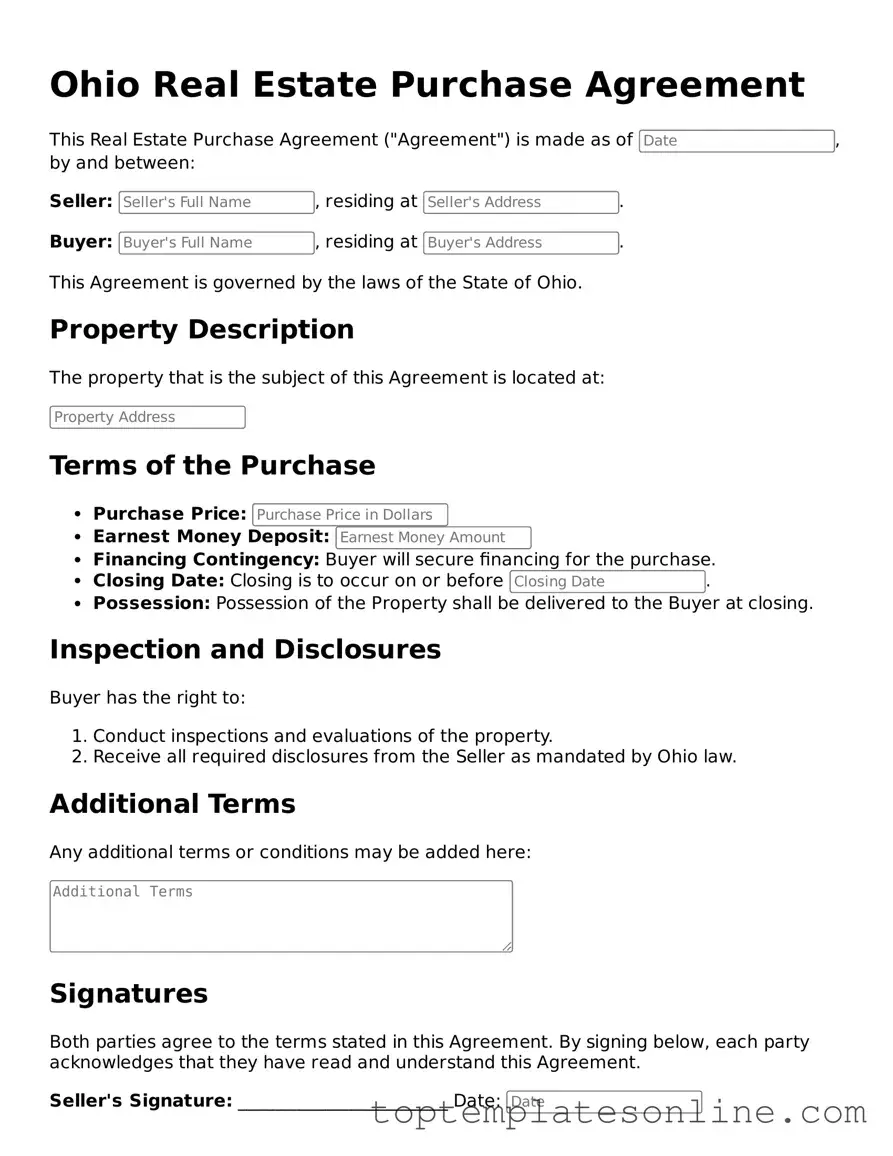Blank Real Estate Purchase Agreement Template for Ohio State
The Ohio Real Estate Purchase Agreement is a legal document that outlines the terms and conditions under which a property will be bought and sold in Ohio. This form serves as a crucial step in the real estate transaction process, providing clarity and protection for both buyers and sellers. Understanding its components can help ensure a smoother transaction and safeguard your interests.
Customize Real Estate Purchase Agreement Here
